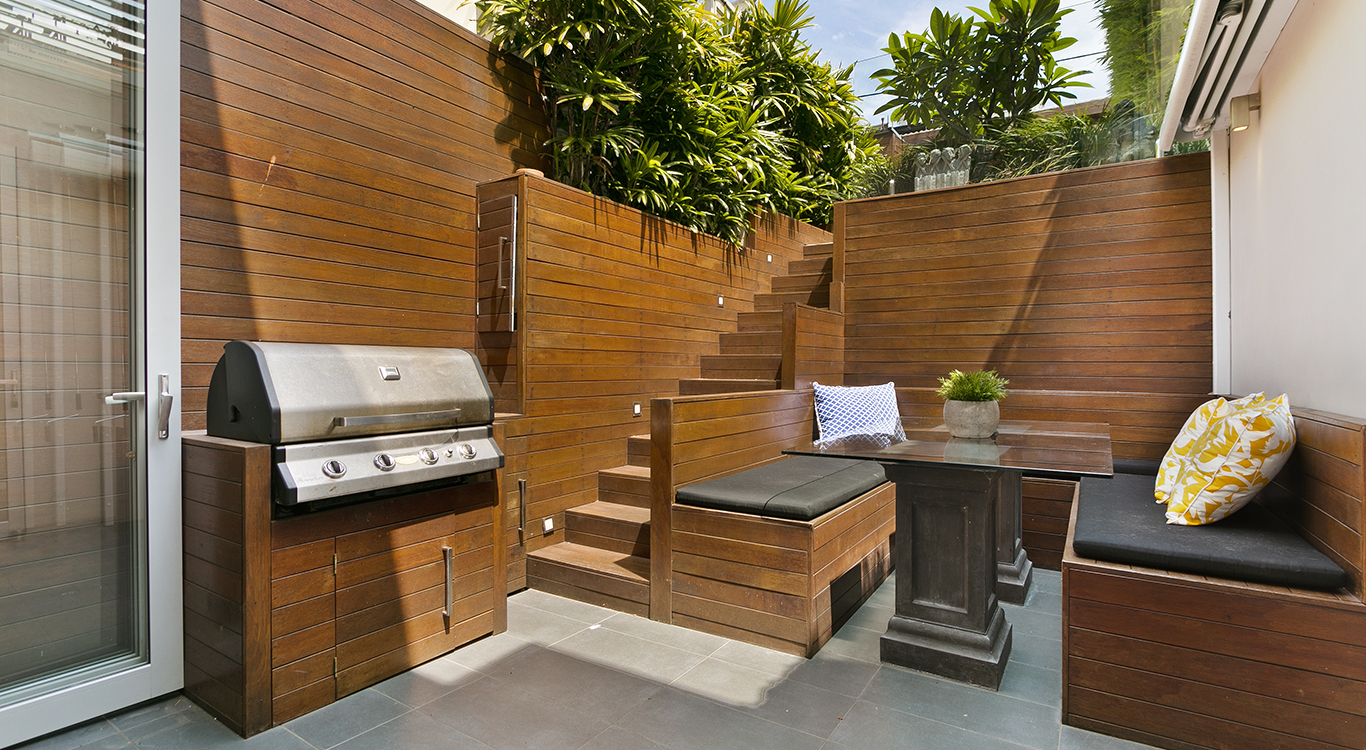
The Ultimate Outdoor Kitchen
Thinking Beyond the Grill
The backyard grilling game has changed. Many homeowners want a full-scale outdoor kitchen with a grill, prep-sink, and lots of counter space. Thinking it through ahead of time makes the process go smoother and ensures an outdoor kitchen that’s the talk of the neighborhood. John Odom, owner and kitchen designer of Archadeck, suggests asking yourself the following...
Where to put it?
Unless you want a poolside cabana kitchen, place it close to the main house to access the indoor kitchen for prep and cleanup. The work area should be close enough to seating so that the cook can interact with guests, but remain out of the traffic pattern flow.
How big?
Adding a kitchen to an existing deck generally means more limited space than a ground-level kitchen. But kitchen size typically tends to follow this formula: 6 to 8 linear outdoor kitchen feet—including the grill, sink, and counters —usually costs at least $5,000 to $6,000, while a $15,000 budget is better for a 15 to 20 linear foot kitchen. The features and quality of the grill can also affect those numbers.
Counter space?
Try not to skimp on counter space. It has a big impact on the experience. Odom prefers granite counters where budget permits, but says tile also stands up well. Counter height is usually 36 inches—same as indoors—but many people set it at a comfortable height for the cook. If your kitchen includes raised bar seating, note that standard barstool height is 42 inches. Stainless steel cabinets are recommended as wood cabinetry shouldn’t be placed next to a hot grill.
Layout?
How to configure the space is an in-depth discussion. But remember, kitchen designers use the same guidelines for outdoors as indoors. The National Kitchen + Bath Association has summarized them for use as a planning tool.
What kind of grill?
Size the grill for your needs and get the best one you can afford. Better quality stainless steel grills have thicker layers, so it’s worth comparing some numbers. “The grill will be outside for its entire life, so this isn’t the place to cut corners,” says Odom.
Refrigerator or not?
While the outdoor kitchen needs a grill and sink, refrigerators are optional. In fact, Odom advises against them because of potential complications with electrical outlets. Consider a stainless steel cooler recessed into the countertop instead. They’re effective, and after the ice melts, water simply drains out of a hose.
Want a wall?
Some people surround their outdoor kitchen with a short wall. For ground-level kitchens, this might consist of cinder blocks clad with thin stone veneer. On a deck, you’ll need to lighten the load. There may be enough excess weight that your contractor needs to reinforce the framing.
What about cover?
Most outdoor kitchens have some protection overhead, whether a framed roof or a pergola. The choice will depend partly on climate: shaded space for areas with intense summer sun, or solid roof in areas with more rain. Some people also add a commercial propane heater or place the walls to block prevailing winds.
Maximizing your investment.
Style points definitely count in the backyard. But make sure the balance between form and function is nearly perfect. Given the time and money you’ll spend creating the ideal outdoor kitchen, it’s worth really thinking it through.
Find inspiration, building tips and ideas for your next project.
Download the Book